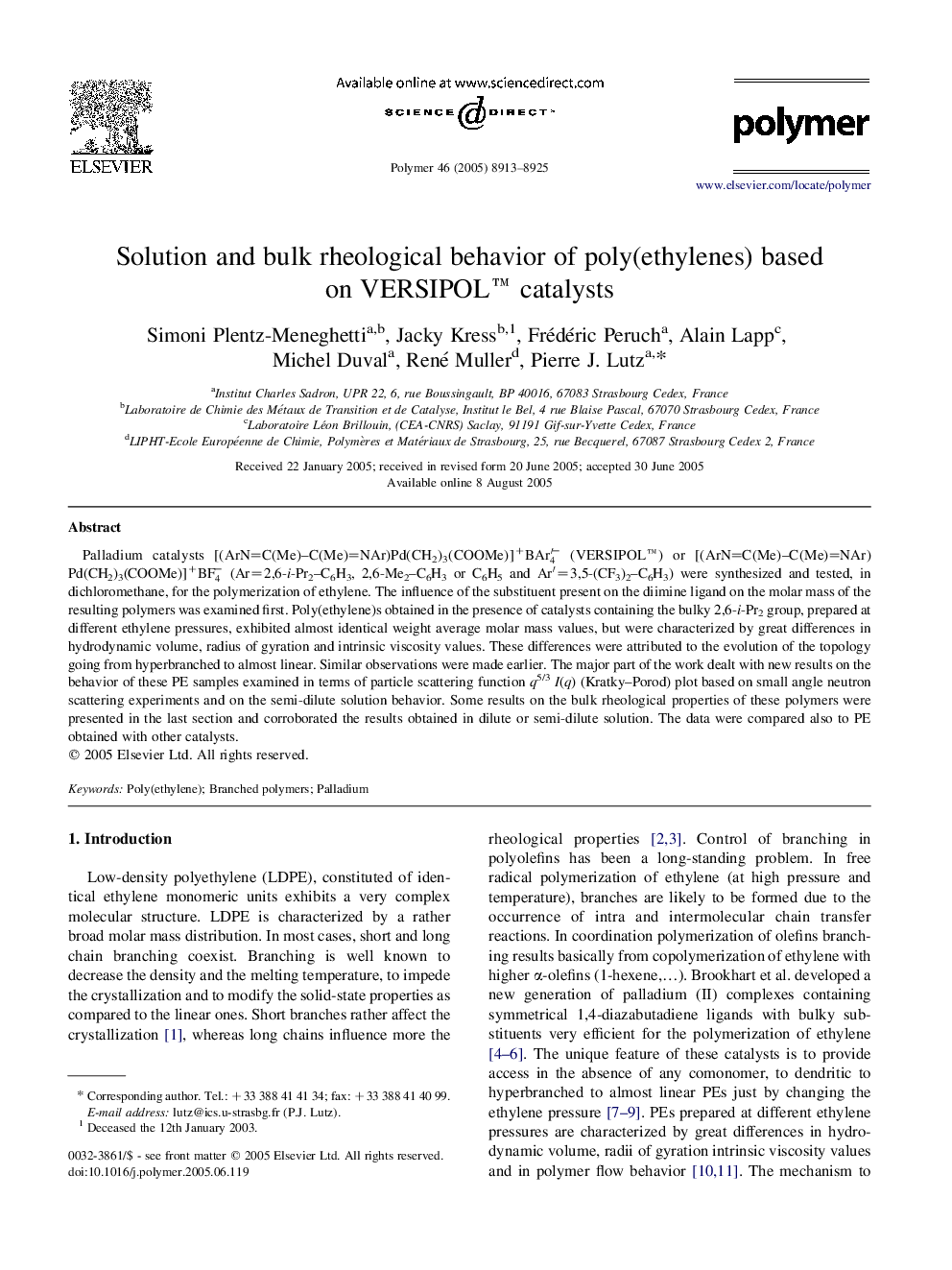| Article ID | Journal | Published Year | Pages | File Type |
|---|---|---|---|---|
| 5187717 | Polymer | 2005 | 13 Pages |
Abstract
Palladium catalysts [(ArNC(Me)-C(Me)NAr)Pd(CH2)3(COOMe)]+BAr4â²â (VERSIPOLâ¢) or [(ArNC(Me)-C(Me)NAr)Pd(CH2)3(COOMe)]+BF4â (Ar=2,6-i-Pr2-C6H3, 2,6-Me2-C6H3 or C6H5 and Arâ²=3,5-(CF3)2-C6H3) were synthesized and tested, in dichloromethane, for the polymerization of ethylene. The influence of the substituent present on the diimine ligand on the molar mass of the resulting polymers was examined first. Poly(ethylene)s obtained in the presence of catalysts containing the bulky 2,6-i-Pr2 group, prepared at different ethylene pressures, exhibited almost identical weight average molar mass values, but were characterized by great differences in hydrodynamic volume, radius of gyration and intrinsic viscosity values. These differences were attributed to the evolution of the topology going from hyperbranched to almost linear. Similar observations were made earlier. The major part of the work dealt with new results on the behavior of these PE samples examined in terms of particle scattering function q5/3I(q) (Kratky-Porod) plot based on small angle neutron scattering experiments and on the semi-dilute solution behavior. Some results on the bulk rheological properties of these polymers were presented in the last section and corroborated the results obtained in dilute or semi-dilute solution. The data were compared also to PE obtained with other catalysts.
Related Topics
Physical Sciences and Engineering
Chemistry
Organic Chemistry
Authors
Simoni Plentz-Meneghetti, Jacky Kress, Frédéric Peruch, Alain Lapp, Michel Duval, René Muller, Pierre J. Lutz,
